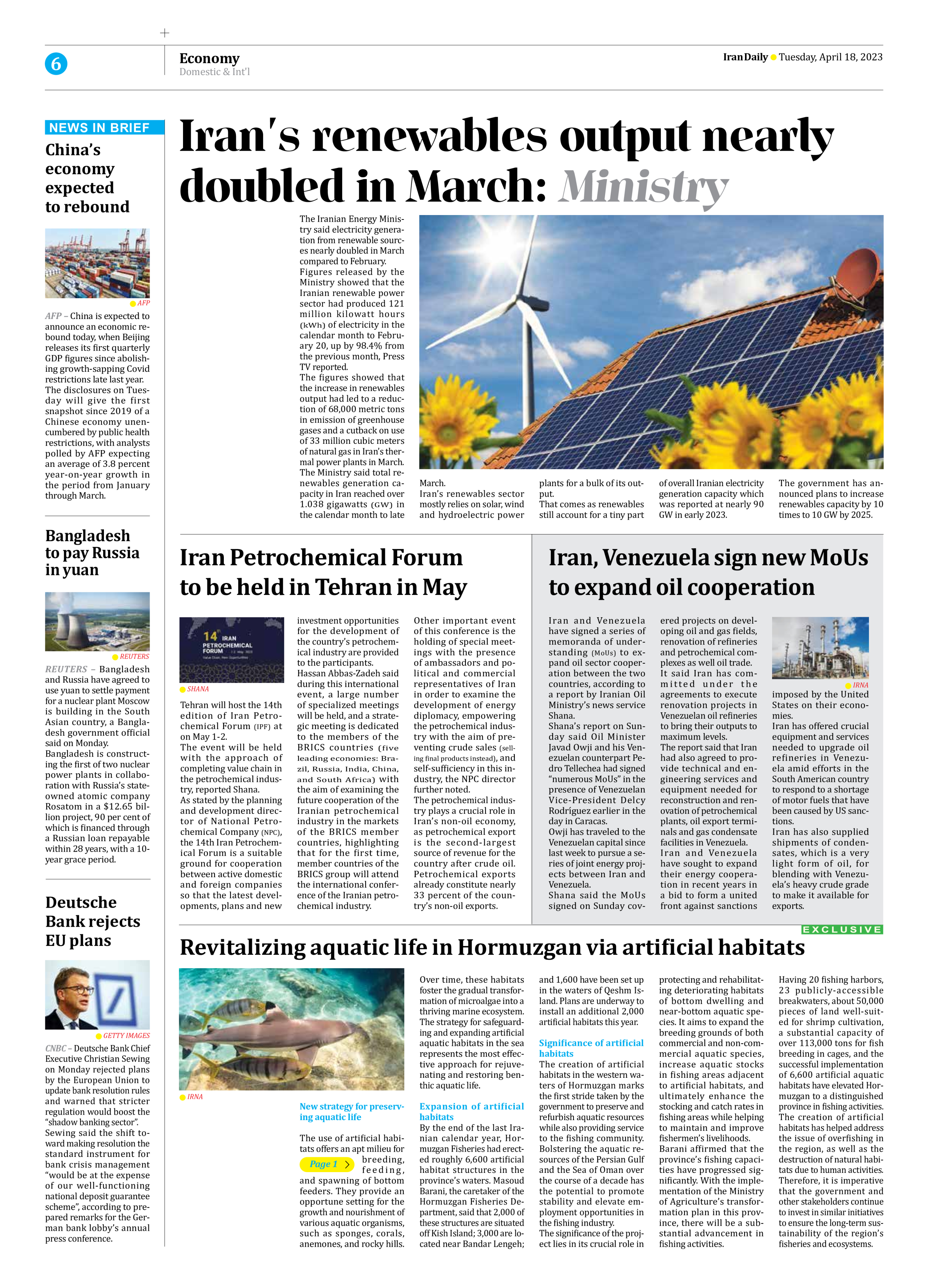
Revitalizing aquatic life in Hormuzgan via artificial habitats
Page 1
New strategy for preserving aquatic life
The use of artificial habitats offers an apt milieu for breeding, feeding, and spawning of bottom feeders. They provide an opportune setting for the growth and nourishment of various aquatic organisms, such as sponges, corals, anemones, and rocky hills. Over time, these habitats foster the gradual transformation of microalgae into a thriving marine ecosystem. The strategy for safeguarding and expanding artificial aquatic habitats in the sea represents the most effective approach for rejuvenating and restoring benthic aquatic life.
Expansion of artificial habitats
By the end of the last Iranian calendar year, Hormuzgan Fisheries had erected roughly 6,600 artificial habitat structures in the province’s waters. Masoud Barani, the caretaker of the Hormuzgan Fisheries Department, said that 2,000 of these structures are situated off Kish Island; 3,000 are located near Bandar Lengeh; and 1,600 have been set up in the waters of Qeshm Island. Plans are underway to install an additional 2,000 artificial habitats this year.
Significance of artificial habitats
The creation of artificial habitats in the western waters of Hormuzgan marks the first stride taken by the government to preserve and refurbish aquatic resources while also providing service to the fishing community. Bolstering the aquatic resources of the Persian Gulf and the Sea of Oman over the course of a decade has the potential to promote stability and elevate employment opportunities in the fishing industry.
The significance of the project lies in its crucial role in protecting and rehabilitating deteriorating habitats of bottom dwelling and near-bottom aquatic species. It aims to expand the breeding grounds of both commercial and non-commercial aquatic species, increase aquatic stocks in fishing areas adjacent to artificial habitats, and ultimately enhance the stocking and catch rates in fishing areas while helping to maintain and improve fishermen’s livelihoods.
Barani affirmed that the province’s fishing capacities have progressed significantly. With the implementation of the Ministry of Agriculture’s transformation plan in this province, there will be a substantial advancement in fishing activities.
Having 20 fishing harbors, 23 publicly-accessible breakwaters, about 50,000 pieces of land well-suited for shrimp cultivation, a substantial capacity of over 113,000 tons for fish breeding in cages, and the successful implementation of 6,600 artificial aquatic habitats have elevated Hormuzgan to a distinguished province in fishing activities.
The creation of artificial habitats has helped address the issue of overfishing in the region, as well as the destruction of natural habitats due to human activities. Therefore, it is imperative that the government and other stakeholders continue to invest in similar initiatives to ensure the long-term sustainability of the region’s fisheries and ecosystems.







